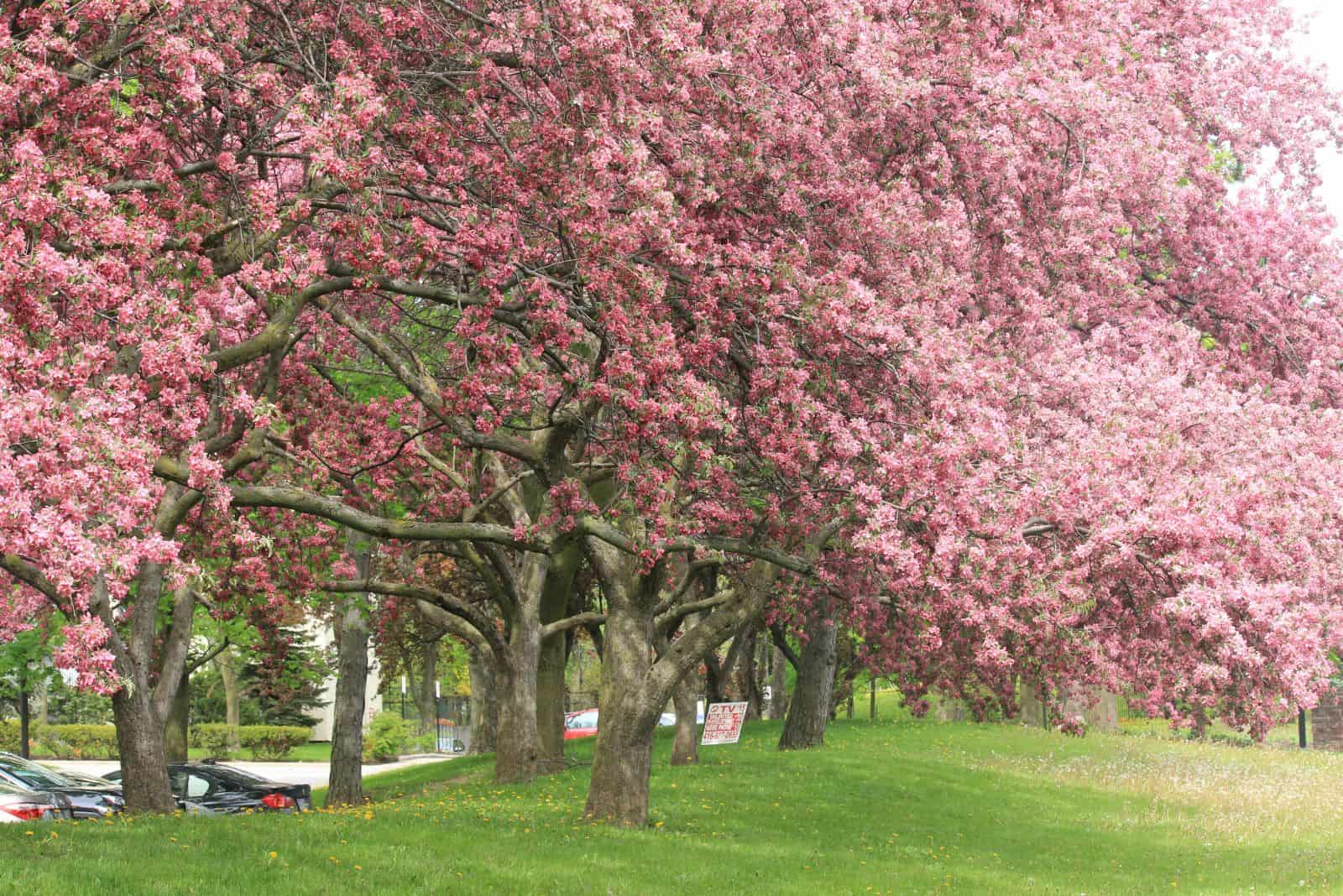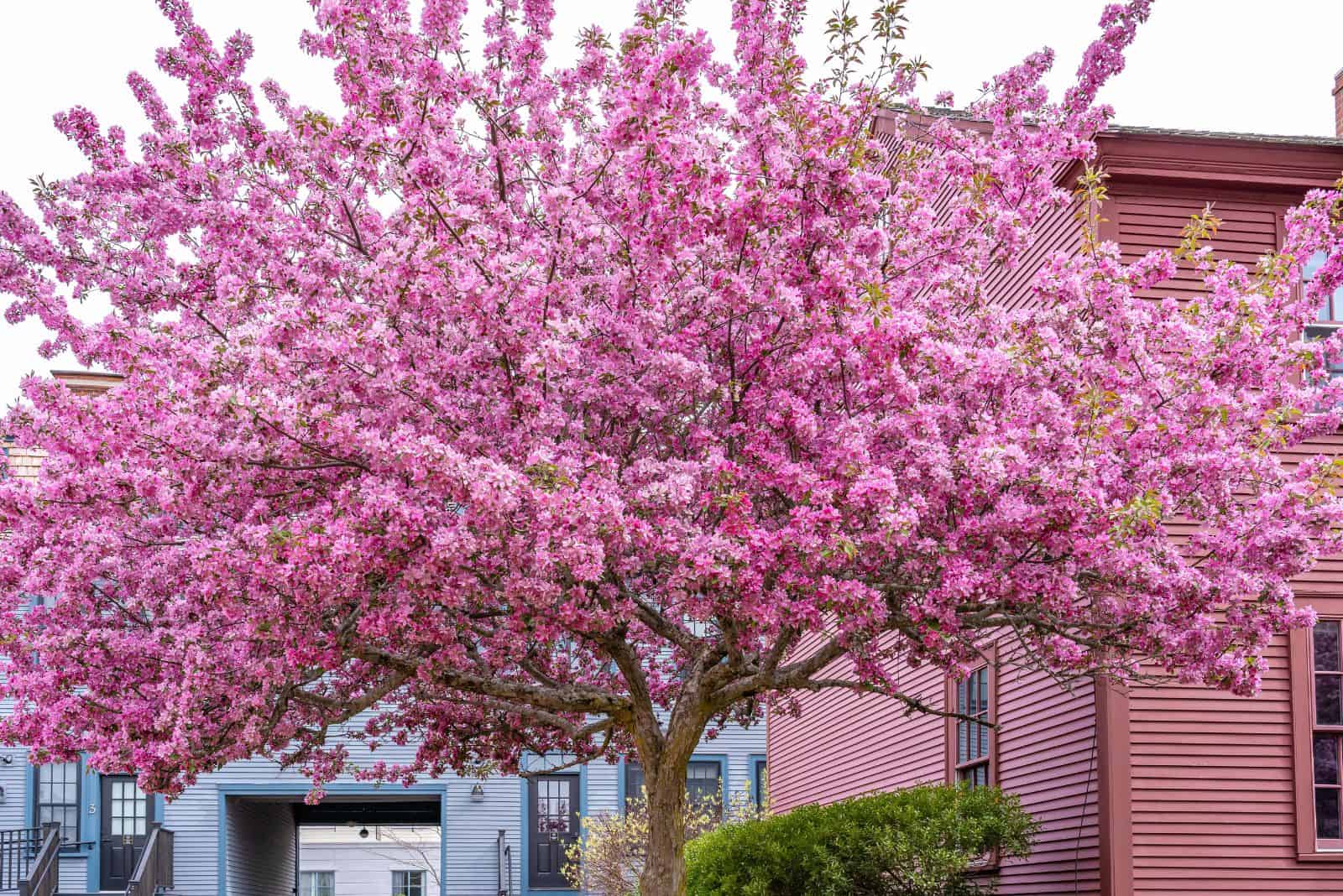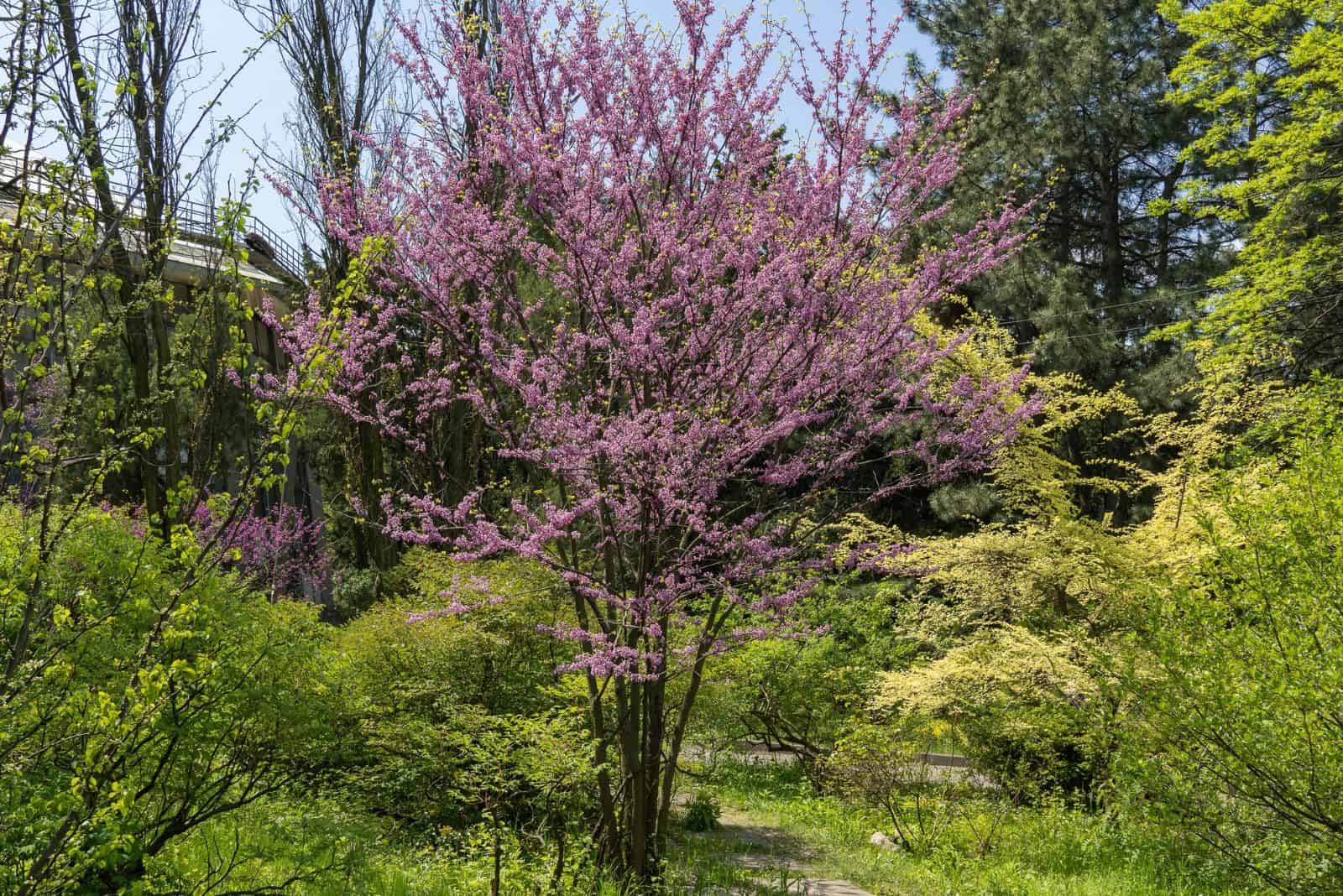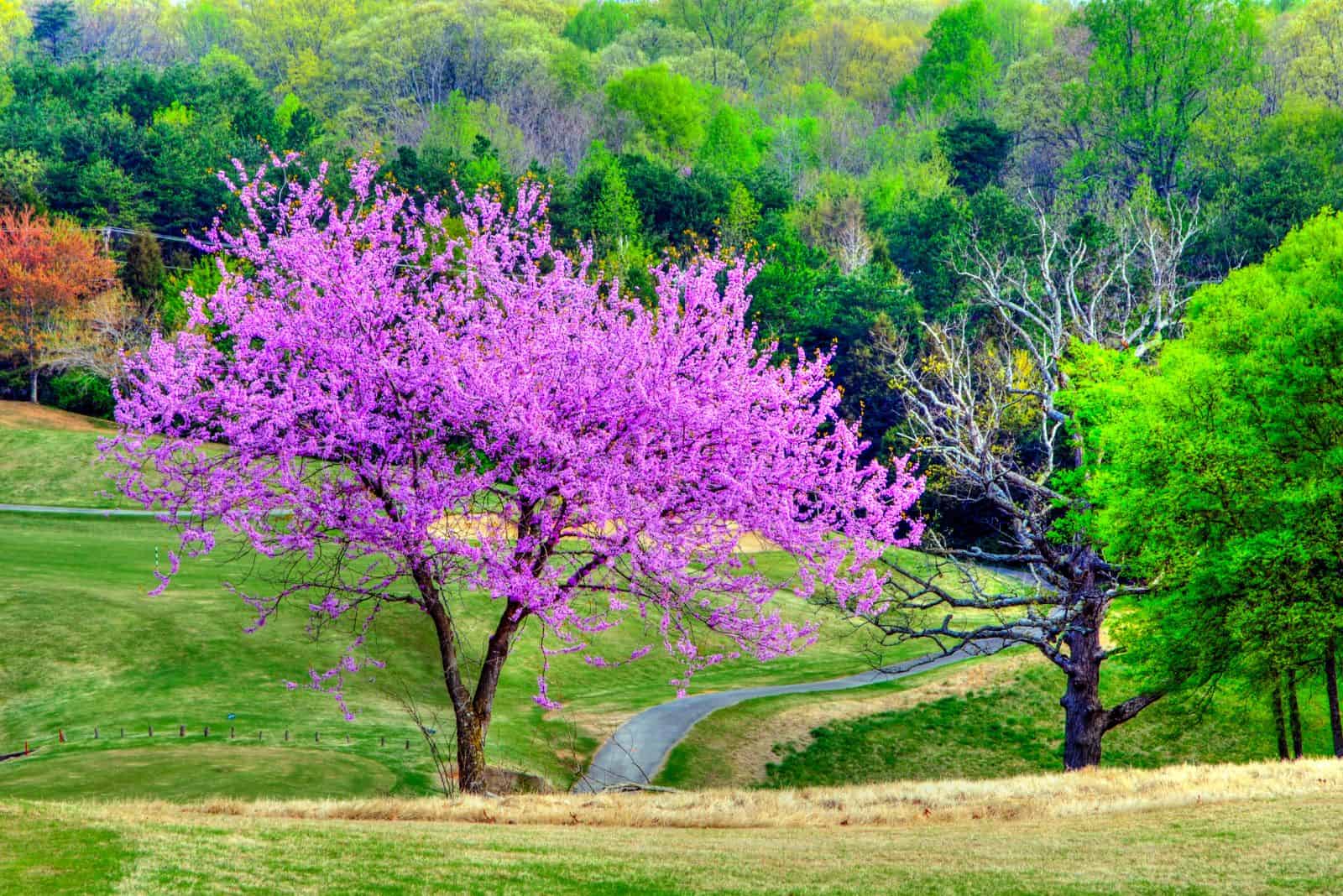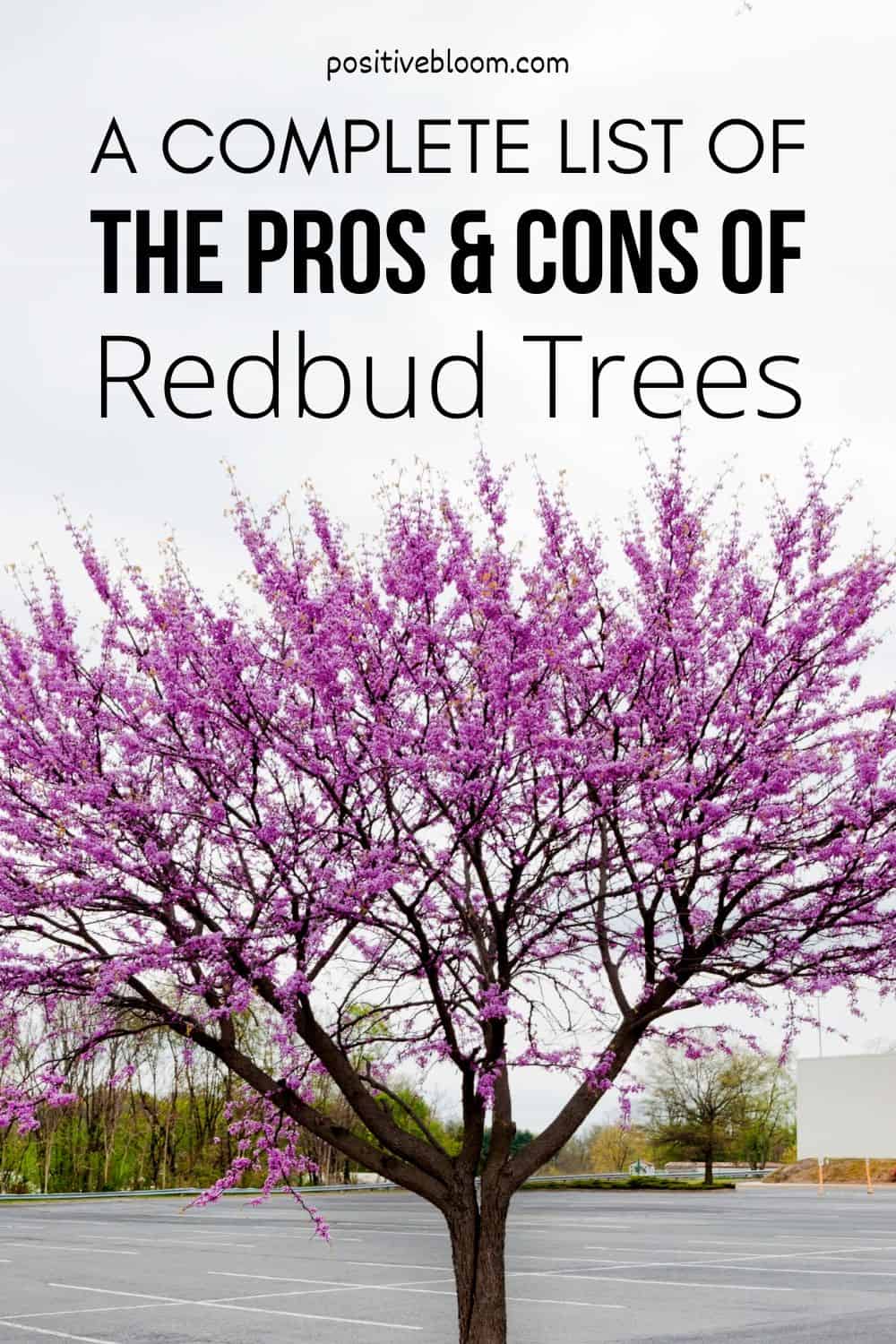I love the springtime, especially when the tiny, white or rosy pink flowers and heart-shaped leaves of the redbud trees adorn the landscapes of North America!
Many choose to grow redbud trees as they’re easy to maintain. Well, that shouldn’t be the only criteria when choosing the right type of tree for your garden.
Nothing is perfect, and the same goes for redbud trees. I wrote a list of all the pros and cons of redbud trees to help you decide whether or not to grow these trees.
Before we move on, here’s some basic info about the redbud tree:
[table id=479 /]
Pros And Cons Of Redbud Trees: Pros
Of course, it’s always better to start with the positives.
The pros of redbud trees include attracting pollinators, their stunning appearance, drought tolerance, size, long blooming season, and all the different varieties to choose from.
Let’s get into details!
Redbud Trees Attract Pollinators
We are not the only ones amazed by the flowers of redbud trees: honey bees, carpenter bees, and butterflies adore the flowers and will often visit our gardens if we grow redbud trees.
Although these trees do well in partial shade, direct sunlight encourages blooming and enhances flower production.
Therefore, if you give your redbud tree a lot of full sun it will produce more flowers, attract more pollinators, and contribute to the ecosystem.
The Redbud Tree Looks Amazing
You’ll mainly find these trees in North America. Still, it has relatives in Europe and Asia. It was recognized by Spaniards in 1571 when they distinguished between New World plants and their relatives in the Mediterranean area.
Years later, George Washington frequently noted how lovely the tree was in his diary. He devoted a considerable amount of time to his garden, replanting seedlings he had taken from the neighboring forest.
The flowers of redbud trees come in different colors, depending on the species. If you are looking for a tree with purple flowers, consider growing a Forest pansy redbud tree.
The story about redbud trees doesn’t end with their flowers. These trees produce captivating heart-shaped leaves that also come in various colors, such as lime green, orange, and golden.
It’s Drought-tolerant
These trees are renowned for their tolerance to drought. Once their root system is formed and the tree is established, it can survive for extended periods of time without water.
For those who live in arid areas or regularly experience water shortages, this is a huge advantage because your redbud tree will endure these conditions and won’t leave your garden ‘naked’.
Additionally, this tree goes through a period of dormancy each year, which increases its resistance to drought.
The growing season for redbud trees lasts from spring through summer, and they hibernate in the colder months.
It’s Low-maintenance
Redbud trees are known as low-maintenance trees. You can grow them in almost all climates – the only thing they won’t withstand is freezing temperatures.
When we choose where to place plants in our gardens, we think of the type of soil, pH level, and the nutrients we need to ensure before planting.
If you decide to grow a redbud tree, you don’t need to worry about any of these things.
You can also plant it in a shady spot and it’ll still thrive.
It’s Small
Many growers prefer trees that are actually trees in terms of size. But for some growers, smaller trees fit better in their gardens.
The redbud tree is the best choice if you are in the second group.
If you wanted to add some shade trees to your garden, but it’s under power lines, the redbud would be the ideal choice.
It Has A Long Blooming Season
If you meet all the redbud tree’s requirements, you can expect it to produce its first flowers in early spring.
They typically flower in April and May, but if you live in warmer climates you may see flowers throughout the summer.
Many Varieties To Choose From
Here comes the best part of all – there are many varieties you can choose from if you decide to grow a redbud tree.
The first variety, and probably the most famous, especially in South Carolina, is the Eastern redbud tree. Scientifically known as Cercis canadensis, the Eastern redbud tree produces breathtakingly pink flowers. It may reach up to 30 feet tall and is suitable for hardiness zones 5 to 9.
The White Eastern redbud variety produces pea-like white flowers, and it isn’t commonly seen in gardens.
The next one is the Judas tree, aka Cercis siliquastrum. It may reach up to 25 feet tall and produces captivating purplish-pink flowers.
The Western redbud, or Cercis occidentalis, typically reaches 20 feet tall. It’s a well-liked tree of homeowners on the West Coast. The flowers come in magenta and appear in spring.
Another amazing variety is the Oklahoma Redbud, scientifically known as Cercis canadensis var. texensis ‘Oklahoma’. It’s a deciduous tree prized for its abundance of colorful, little, purple-red blossoms that cover the barren branches.
As the blossoms fade, lustrous heart-shaped leaves develop with a light pink tint before maturing to a deep green.
Cons Of Redbud Trees
If the paragraphs above convinced you to start growing a redbud tree, I recommend reading the paragraphs below about the downsides of redbud trees before you get too excited!
In short, the cons of redbud trees are their short lifespan, susceptibility to pests and diseases, and high demands for water in juvenile trees.
Let’s get into details!
Short Lifespan
If you want to plant a tree that will adorn your garden for many, many years, the redbud tree isn’t the best choice.
It only lives for 20-30 years, and that’s really short for a tree. You’ll live long enough to see it fading away.
These trees have a medium growth rate and mainly die due to diseases.
Susceptibility To Pests
The most common pests that visit redbud trees are aphids. They’ll feed on the green leaves of your redbud tree and be a true nuisance.
Another pest you may come upon are tent caterpillars. Imagine you put a chair under your redbud tree and decide to enjoy its beauty and suddenly notice these unattractive creatures.
That’s not what we want in our gardens.
Susceptibility To Diseases
One of the biggest downsides of redbud trees is their susceptibility to fungal diseases. Some of the diseases that may attack your redbud tree include Verticillium Wilt, Botryosphaeria Canker, and Leaf Anthracnose.
Most diseases that attack this tree can’t be cured with fungicides. The only thing that may help you is early detection.
Young Redbud Trees Need A Lot Of Water
I know what you might be thinking: the redbud tree is drought-tolerant but needs a lot of water?!
Well, I mentioned that established redbud trees can survive without water for some time, but that’s not the case with young trees.
Your redbud tree most likely won’t display any new growth in the first year and will need a lot of water.
Older redbud trees have strong taproots, and lack of water can’t destroy them. On the other hand, juvenile redbud trees absorb water faster.
This shouldn’t worry you much if you have access to clean water in your garden. It becomes a pretty big problem if you don’t have it.
Frequently Asked Questions
Are redbuds messy trees?
The answer is both yes and no. For example, some varieties, such as the Eastern redbud tree, produce seed pods after the blooming period, and that may get pretty messy. If you want to avoid this, I recommend other varieties, such as the Don Egolf redbud or Traveller redbud tree.
Are redbud tree roots invasive?
If you are worried that a redbud will take over your garden, I have great news for you. The roots of this tree aren’t invasive compared to other trees as mature redbud trees have a pretty shallow root system.
Are redbud tree leaves edible?
If you have a young redbud tree, you can eat its raw or processed leaves. Native Americans consumed young seed pods, seeds, and petals of redbuds. Flowers are full of Vitamin C, and you can add them to salads. Many use unopened flowers as a substitute for the caper. Redbud flowers and seeds contain significant levels of antioxidants.
When is the best time to plant redbud?
I recommend planting redbud trees in the early fall. The temperatures are still warm enough, including soil temperatures, so the redbud tree will generate new growth in the root system and then go dormant. Once it wakes up from dormancy and faces high temperatures, it will be less sensitive to shock.
Wrapping Up
Although some plants look amazing and would make a perfect addition to our gardens, we should consider everything before planting.
You’ve seen all the pros and cons of redbud trees.
If you were wondering whether or not to grow a redbud tree, I am sure you have now made up your mind.
Until next time!
Like this post? Share or pin it for later!

